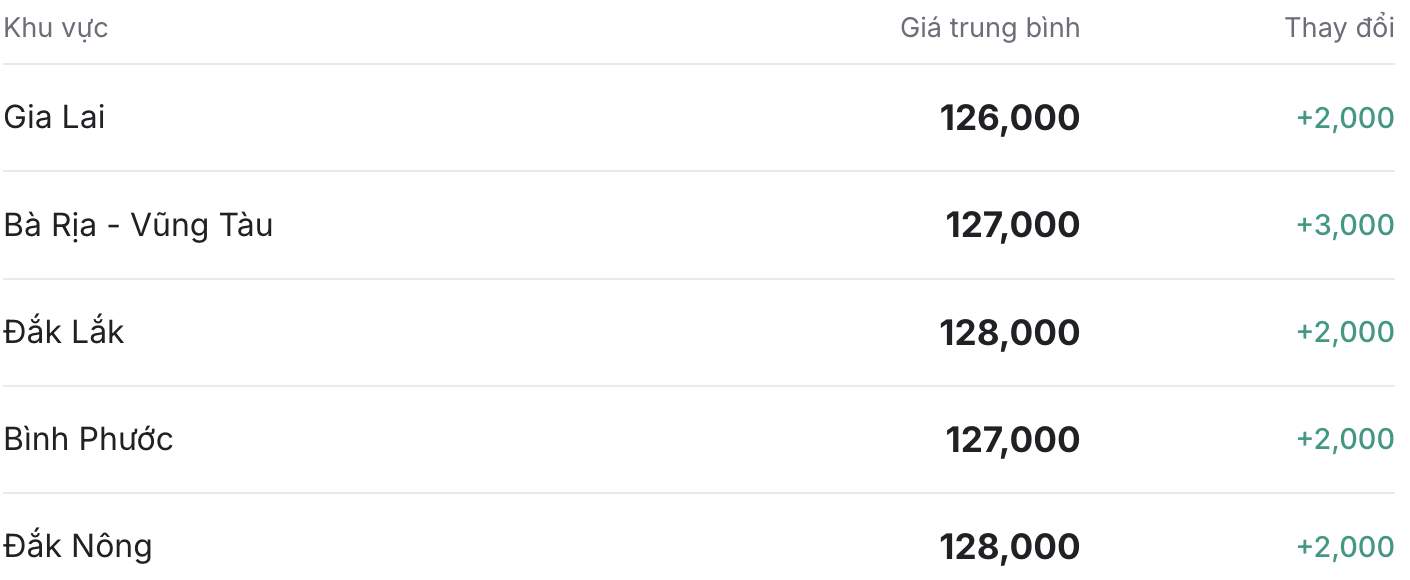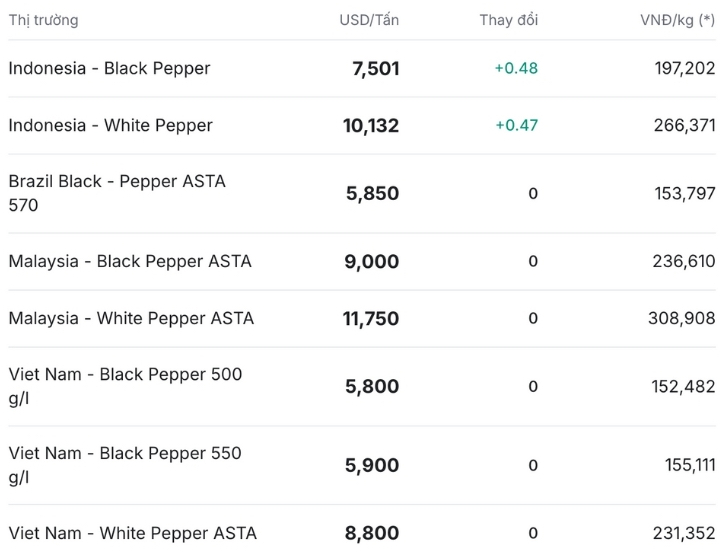Domestic pepper prices: Increase
As of 7:15 p.m. today (September 26), the domestic pepper market continued to increase, increasing by an average of VND 2,200/kg. Currently, the purchase price of pepper is recorded at 126,000 - 128,000 VND/kg.
The two provinces of Binh Phuoc and Ba Ria - Vung Tau have increased by VND 2,000/kg and VND 3,000/kg, respectively, bringing the price to VND 127,000/kg.
Notably, Gia Lai is currently the province with the lowest pepper purchasing price of 126,000 VND/kg, although the price has increased by 2,000 VND/kg.
Meanwhile, Dak Lak and Dak Nong provinces continue to maintain the leading position among the provinces and cities with the highest pepper purchasing prices in the country at 128,000 VND/kg.

World pepper prices: Indonesia increases widely
In the world market, pepper prices are moving in the same direction as domestic pepper. The Indonesian exchange - one of the most vibrant markets is no exception. Currently, these two items have increased by 0.48% and 0.47% for black pepper and white pepper, respectively, bringing the trading price to around 7,501 USD/ton (equivalent to 197,202 VND/kg) - 10,132 USD/ton (about 266,371 VND/kg).
In Vietnam, the export price of black pepper of 500 g/l and 550 g/l fluctuated in a slight downward trend, fluctuating between 5,800 - 5,900 USD/ton. ASTA white pepper prices reached 8,800 USD/ton (equivalent to 231,352 VND/kg).
In the same direction, the Brazilian exchange rate remains unchanged, this region is currently at 5,850 USD/ton (about 153,797 VND/kg). Meanwhile, Malaysia's black and white pepper remained at 11,750 USD/ton and 9,000 USD/ton.

Assessment and forecast
One of the main reasons for the increase in pepper prices is the tightening supply. In major pepper producing countries such as Vietnam, Indonesia and India, recent unfavorable weather such as prolonged heavy rain, sudden drought and unusually high temperatures have seriously affected the productivity and quality of pepper plants.
In Vietnam, pepper cultivation has been continuously declining in recent years as farmers have switched to higher-yield and lower-risk crops after a period of steep pepper prices. This makes the 2025 pepper output significantly lower than the same period last year.











